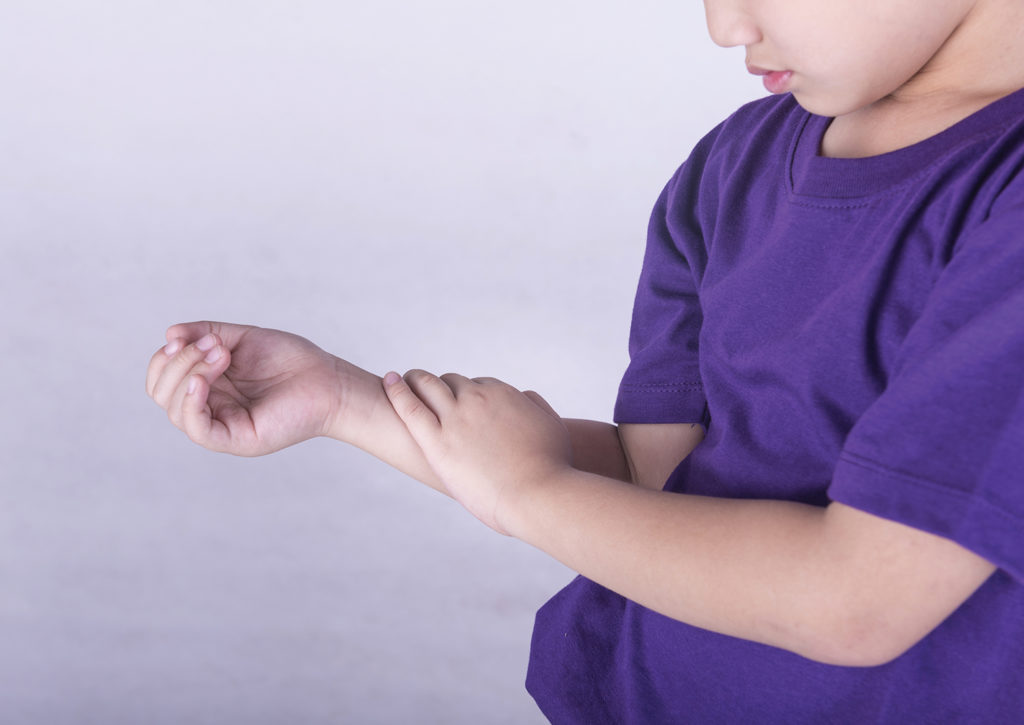July is Juvenile Arthritis Awareness Month

Because Kids Get Arthritis, Too!
Not just your grandparents’ disease, arthritis can affect children as young as six months of age.
When we think of arthritis, we may often think of this disease as affecting older adults, but kids can also get arthritis. In fact, nearly 300,000 children in the United States have been diagnosed with some form of juvenile arthritis. According to curearthritis.org, the form of arthritis that affects kids is not the same experience that their grandparents might have. When children suffer from various autoimmune forms of arthritis, their body’s immune system begins to attack their joints, which can cause swelling, stiffness and even permanent damage. Juvenile arthritis is a serious condition and one that, if left untreated, can result in loss of mobility, blindness and even death. One of the most prevalent forms of juvenile arthritis is juvenile idiopathic arthritis (JIA), which has affected in excess of 50,000 children in the United States alone. This disease is frequently referred to as juvenile rheumatoid arthritis (JRA).

Because most people do not even realize kids can get arthritis, the initial symptoms may be overlooked or dismissed as something else. An autoimmune form of arthritis can be particularly aggressive in children due to the fact that their immune systems are not fully formed until about age 18. When afflicted with juvenile arthritis, or any form thereof, complications can include the inability to fight off normal diseases, leaving them vulnerable to issues adversely affecting their eyes and bone growth, among other things. This disease affects children both physically and emotionally, frequently resulting in excruciating pain and feelings of isolation, loneliness and depression. This makes it challenging for kids to embrace common childhood activities, such as socializing with friends, spending quality time with family and just being a kid.
Each year, Juvenile Arthritis Awareness Month coincides with the annual Juvenile Arthritis Conference, helping to spread increased awareness about the seriousness of juvenile arthritis. Despite the daily challenges kids (and their families!) face when living with arthritis, many work hard each day to remain happy and healthy in spite of this disease. By placing a spotlight on this disease through this annual event, inspirational stories are shared, blessing others in the juvenile arthritis community and supporting the ideal that arthritis does not have to define a person or the family.

Juvenile arthritis can present in children as young as six month of age to as old as 18. Persistent joint pain, reddened joints and swelling are the key indicators. There are several types of juvenile arthritis which share many common symptoms, including pain, joint swelling, redness and warmth. However, each type of juvenile arthritis is unique in and of itself, presenting with its own set of characteristic and how the body is ultimately affected.
When a child is initially symptomatic in terms of swollen joints and a fever, it is easy to assume these symptoms are due to a flu bug or that perhaps a sudden rash is indicative of an allergic reaction to something. Because these symptoms might recede for a while, the diagnosis is then delayed because the idea that a child could have arthritis is not usually at top of mind. According to arthritis.org, the most common forms of juvenile arthritis include juvenile idiopathic arthritis; juvenile dermatomyositis; juvenile lupus; juvenile scleroderma; Kawasaki disease; mixed connective tissue disease; and fibromyalgia.
In spreading awareness of juvenile arthritis, patients and their families can learn more about ways to deal with this disease on a daily basis. For example, daily exercise is key and the benefits are amazing for kids affected with juvenile arthritis. Just because a child has juvenile arthritis does not mean he or she should avoid physical exercise. In fact, the opposite is true. Studies have shown that fitness and exercise training in children with arthritis is safe. Staying physically fit and active can improve the patient’s muscle strength and endurance.

Maintaining a healthy diet is equally essential. For kids with juvenile arthritis, the need for proper nutrition is extremely important because the kids’ appetites can be suppressed by the disease or by the medication they take to control it. Additionally, joint pain, fatigue, and stomach pain may deter a child from eating and some may also experience difficulty with chewing or swallowing food. Further, some children may not be able to easily cut up and handle food due to arthritis in the hands, fingers and wrists. When proper nutrition is not met in kids with juvenile arthritis, they can open themselves up to other issues, including poor growth, malnutrition, anemia, nutrient deficiencies and even osteoporosis. The key is to control the disease with effective medications so appetites improve, energy is increased and joint pain is reduced to encourage a more active lifestyle.
Proper medical care and treatment is also pivotal to the success of reaching the ultimate goal of remission with this disease, and experts in this arena indicate an early, aggressive treatment regimen potentially carries less risk than when left untreated, which can lead to irreversible joint damage. While there is no cure at present for juvenile arthritis, the goal in treatment is to relieve inflammation, control pain and improve quality of life.
Sources: curearthritis.org, kidsgetarthritistoo.org, arthritis.org.






